US mining and exploration Snapshot: Eight companies with big plans
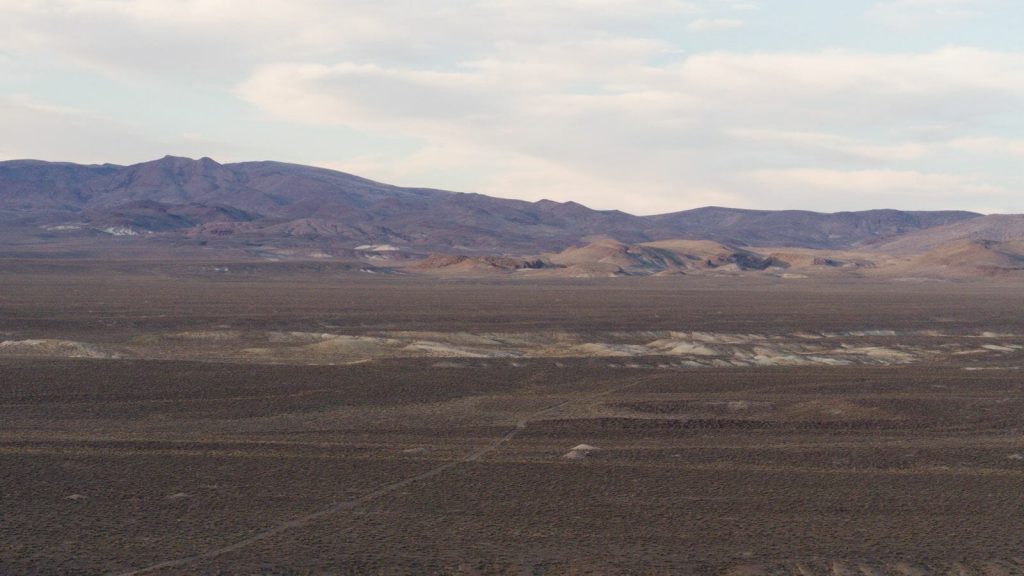
Last year was transformational for American Lithium as it acquired Plateau Energy Metals, which owned the Falchani lithium and Macusani uranium projects in Peru. American Lithium was also named to the 2021 TSX Venture 50, an annual ranking of top performing listed companies on the TSX Venture Exchange. (Selection is based on year-over-year performance across three equally weighted criteria: market capitalization growth, share price appreciation and trading volume for the year ended December 31, 2020.)
At the TLC project last year, metallurgical studies were completed, water rights secured, a baseline biological study done, and a plan of operations was filed.
Last month, the U.S. Bureau of Land Management approved the TLC operations plan, and American lithium began a 95-hole drill program. It will also dig five test pits to collect samples for metallurgical testing. The results of those tests will help finalize the flowsheet of the processing plant and be used to produce a preliminary economic assessment in the second quarter of this year.
Drilling at TLC in 2019 returned samples that assayed up to 2,285 parts per million (ppm) lithium with numerous samples over 1,600 ppm lithium. Grab samples assayed as high as 1,690 ppm lithium. Spectrographic analysis by the company identified samples as high as 2,450 ppm lithium. Such information was used to produce a resource estimate in 2020 for a near-surface deposit mineable with a low strip ratio.
TLC’s measured and indicated resources stand at 1.1 million tonnes grading 919 ppm lithium, containing the equivalent of 5.4 million tonnes of lithium carbonate. The inferred portion contains 362,000 tonnes grading 912 ppm lithium, containing the equivalent of 1.7 million tonnes of lithium carbonate. A cut-off of 400 ppm lithium was used.
Metallurgical studies have revealed lithium recovery rates of better than 90% from the TLC claystone after ten minutes. No significant concentrations of arsenic or uranium were reported. The project has little to no overburden and sits above the local water table with no groundwater runoff or watershed issues.
Expect the PEA to update costs for a medium-sized run-of-mine surface operation that does not require blasting.
American Lithium has a market capitalization of $561.9 million.
EnCore Energy
EnCore Energy (TSXV: EU; US-OTC: ENCUF) is advancing a portfolio of nearly 20 uranium projects in Texas, New Mexico, Wyoming, South Dakota, Utah, Colorado, and Arizona. The company’s goal is to become the leading in situ recovery (ISR) uranium producer in the United States.
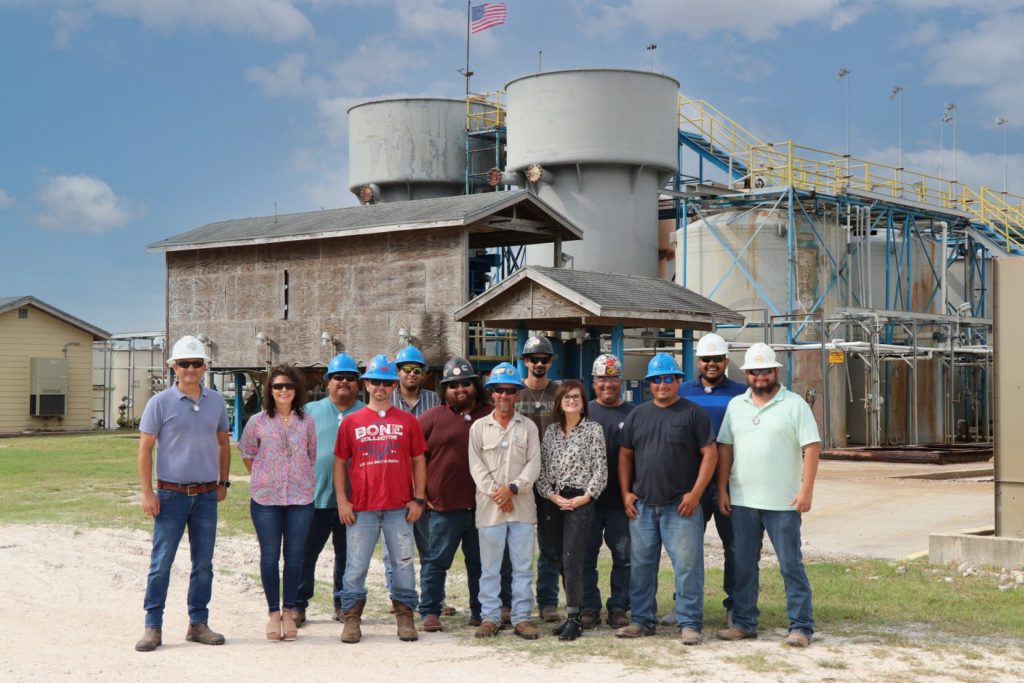
EnCore acquired many of its projects through its takeover of Azarga Uranium in 2021. Given the large number of projects, we will focus only on the most advanced.
In addition, EnCore has two licensed processing plants in Texas (out of a total of just 11 in the U.S.) — Rosita and Kingsville Dome — both of which were former producers. Together they have nameplate capacity of 1.6 million lb. uranium oxide per year.
The Rosita plant is being modernized, and the project will be complete by mid-year. The project had less than a US$1 million budget with changes to the yellowcake filter press dryer circuits and the ion resin elution circuit. Production is slated to restart in 2023 using feed solutions from several satellite operations. Remote ion exchange plants with capacities of 30,000 to 40,000 litres per minute will be located at the wellfields.
To feed the Rosita plant, the Rosita wellfield is being expanded within the existing permit. The Upper Spring Creek project is licenced and will be developed. The Butler Ranch exploration project waits in the wings with a 43-101 report due in the second quarter of this year.
In South Dakota, the Dewey Burdock uranium project was the subject of a 2019 preliminary economic assessment. The project was estimated to have a 16-year life (including a two year ramp-up) with annual production of 1 million lb. uranium oxide. The total cost per lb. of uranium oxide produced would be $28.88.
The PEA put the pre-production capital requirement at $31.6 million followed by sustaining capital of $123.2 million. The estimated payback would occur at the end of the second year if design and procurement activities get underway in the second quarter of year one. The study assumed a long-term price of $55 per lb. uranium oxide.
After taxes, the Dewey Burdock project has a net present value with an 8% discount rate of $147.5 million and an internal rate of return of 50%. Over its operation, the mine would generate net earnings post-tax of $324.4 million.
Dewey Burdock’s measured and indicated resources suitable for ISR are 6.7 million tonnes grading 0.116% uranium oxide for 17.1 million contained lb. uranium oxide. The inferred portion is 585.6 million tonnes grading 0.055% for 712,624 contained lb. of uranium oxide.
At its Gas Hills uranium project in Wyoming, the company released a PEA in 2021. The project is located in a historic uranium district that produced about 100 million lb. of yellowcake from 1957 to 1989. EnCore considers it a potential satellite deposit to the Dewey Burdock project.
Gas Hills’ ISR measured and indicated resources are 3.5 million tonnes grading 0.101% uranium oxide for 7 million contained pounds. The inferred resource is 371,338 tonnes grading 0.052% uranium oxide for 427,817 contained pounds.
In its recent corporate presentation, EnCore suggested the Gas Hills project would have a mine life of seven years, producing about 1 million lb. uranium oxide yearly. No total or all-in sustaining cost per lb. was available.
The project has a pre-production capital requirement of $26 million, but no payback period was mentioned. Again, the study used $55 per lb. uranium oxide as its base case assumption.
EnCore has a dominant position in the Grants mining district in New Mexico (sometimes referred to as America’s Kazakhstan). The area produced about 350 million lb. of uranium from 1948 to 2002, a number that represents 97% of the uranium mined in the state or 40% of all the uranium mined in the U.S. during that period. A further 400+ million lb. of unmined mineralization has been identified.
The Crownpoint and Hosta Butte project is a large ISR-amenable undertaking that hosts 26.6 million lb. of uranium oxide in 11.5 million indicated tonnes grading 0.105% uranium oxide. The inferred resource hosts 6.1 million lb. in 2.5 million tonnes grading 0.11% uranium oxide.
The Crownpoint deposit was licenced to recover up to 3 million lb. of uranium oxide annually by a previous owner. Three shafts were sunk on the project in the 1980s.
A PEA for the Marquez-Juan Tafoya uranium project in New Mexico was filed last year. An indicated resource of 6.4 million tonnes grading 0.127% uranium oxide for 18.1 million contained lb. was published. No information was given for inferred resources or reserves. The suggestion was made that it be mined by room and pillar methods rather than ISR to which EnCore is committed.
Elsewhere in New Mexico, EnCore owns the Nose Rock and West Largo projects, both of which have historic resources; the Ambrosia Lake-Treeline property with ISR potential; and mineral rights to the Checkerboard property that potentially hosts several deposits.
Encore Energy has a market capitalization of $316.5 million.
Highland Copper Company
Highland Copper Company (TSXV: HI; US-OTC: HDRSF) has two projects in Michigan’s Upper Peninsula. Its flagship Copperwood copper-silver project is located about 40 km from the town of Ironwood, and its White Pine North copper project is in the Keweenaw Peninsula region.
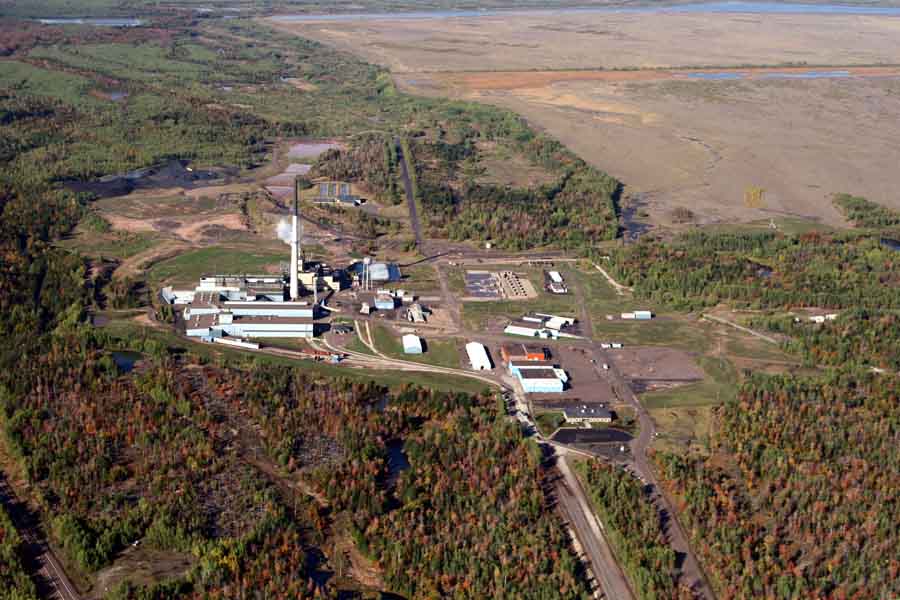
Copperwood was discovered in 1956 and has the highest grade of all known sediment-hosted deposits in the region. It is at the development stage with permitting activities underway. The air discharge, dam safety and wetlands permit have been received, as well as an amendment to the mining permit and the wastewater discharge permit. The application to obtain a Lake Superior water intake permit is outstanding. The mill design and metallurgical test program is completed.
According to a 2018 feasibility study, the Copperwood deposit has 49.3 million measured and indicated tonnes grading 1.15% copper and 3.83 grams silver per tonne for 1.7 billion lb. contained copper and 5.9 million oz. of silver. The inferred resource is 1.5 million tonnes grading 1.18% copper and 1.55 grams silver per tonne for 43 million lb. contained copper and 100,000 oz. of silver.
There are also nearby satellite deposits with inferred resources of 59.9 million tonnes grading 1.15% copper and 342 grams silver per tonne. These deposits contain an estimated 1.3 billion lb. of copper and 5.5 million oz. of silver.
The life of the Copperwood mine was estimated at about ten years with average annual production of 690 million lb. of copper and 232.1 million oz. of silver.
The feasibility study estimated an initial capital expenditure of $174 million to create a mechanized underground room and pillar mine operating at a rate of 6,600 tonnes per day. Payback would be achieved in 3.2 years. Metals prices of $3.00 per lb. copper and $18 per oz. silver were used for the study.
The Copperwood project has an after-tax net present value with an 8% discount rate of $316 million and an after-tax internal rate of return 18%. The project benefits from well-developed local transportation and energy infrastructure, and payback will take 3.2 years.
The company sees upside for Copperwood with resource upgrades, especially satellite orebodies, evolving mining techniques to increase productivity and reduce costs as well as reduced ore dilution, increased metallurgical recoveries, and capital-saving tailings management practices.
Highland Copper completed the acquisition of the White Pine North copper project last year. Large-scale mining was begun in 1953 using room and pillar techniques, but the mine closed in 1997. From 1954 through 1995 the mine produced 4.5 billion lb. of copper.
In 2019, a preliminary economic assessment of reopening the mine outlined a project with a life of 25 years, during which time it could produce another 89 million lb. of copper and 1.3 million oz. of silver.
To restart the mine and refurbish the mill would cost $457 million, net of pre-production revenue of $43.9 million. The payback period would be 4.5 years. The base case was estimated using a copper price of $3.00 per pound.
The indicated resource is 133.4 million tonnes grading 1.07% copper for 3.2 million lb. copper, and 14.9 grams silver per tonne for 63.8 million contained oz. silver. The inferred resource was 97.2 million tonnes grading 1.03% copper (containing 2.2 million lb. copper) and 8.7 grams silver per tonne (containing 27.2 million oz. silver). Life-of-mine cash costs were estimated at $1.40 per lb. of copper.
The White Pine North project has an after-tax net present value at an 8% discount rate of $416 million and an initial rate of return of 16.8% after taxes.
With two promising projects in Upper Michigan, Highland Copper sold its non-core assets to Sweetwater Royalties for $26 million last year.
Highland Copper has a market capitalization of $87.1 million.
Hudbay Minerals
Hudbay Minerals (TSX: HBM; NYSE: HBM) may be nearing the end of mining in Flin Flon, Manitoba, but it has two advanced copper projects in the U.S. — Mason in Nevada and Rosemont in Arizona.
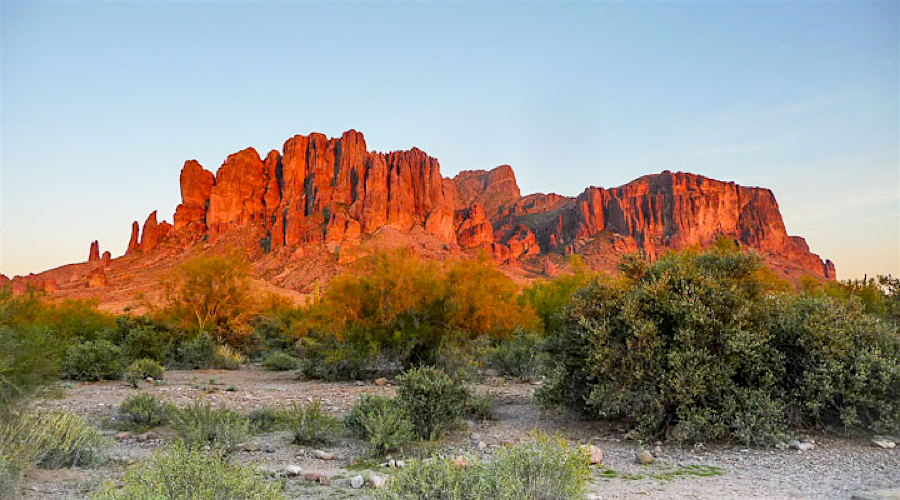
Hudbay is moving forward at its Mason copper project, 75 km southeast of Reno. The company acquired Mason in 2018 and considers it a long-term option for development and a strong component of its pipeline.
A 2021 preliminary economic assessment for Mason outlined a 27-year mine life with annual production of about 30.9 million lb. of copper in each of the first ten years of production. The project carries what Hudbay calls a ‘sustaining cash cost’ of $1.76 per lb. copper over the life of the mine.
It would cost $1.65 billion to build the mine and a 120,000 tonne-per-day concentrator. The project would pay for itself in nine years with a copper price of $3.10 per pound. The net present value at an 8% discount rate would be $741 million and the internal rate of return would be $13.7%, both after taxes.
Resources in the measured and indicated category include 2.2 billion tonnes grading 0.29% copper, 67 grams molybdenum per tonne, 0.029 gram gold per tonne, and 0.64 gram silver per tonne. The inferred resource is 237 million tonnes grading 0.24% copper, 78 grams molybdenum, 0.33 gram gold, and 0.73 gram silver.
Hudbay is compiling and interpreting historical data related to its land package near Mason. That will be followed by a geophysical survey and the selection of additional drill targets. Consultation with local stakeholders is ongoing.
The Rosemont copper-molybdenum-silver project 50 km southeast of the city of Phoenix was acquired in 2018. It could be the largest active copper mine in the country. The project would have a 19-year life with annual production of almost 28 million lb. of copper in each of the first ten years of operation as an open pit mine. The company has suggested cash costs of $1.14 per lb. copper, net of by-product credits.
The project was permitted and Hudbay was prepared to spend $95.7 million for an early works program in 2019, when the U.S. District Court vacated and remanded the project permit awarded by the U.S. Forest Service. A later appeal by Hudbay was rejected by the same court.
Work is halted at Rosemont, but the resources remain. Late last year, Hudbay released a resource estimate for Rosemont of 2.2 billion measured and indicated tonnes grading 0.29% copper, 67 grams molybdenum per tonne, 0.029 gram gold per tonne and 0.63 gram silver per tonne. The inferred portion was 237 million tonnes grading 0.24% copper, 89 grams molybdenum, 0.33 grams gold, and 0.73 grams silver per tonne. These resources include a near-surface, high-grade indicated resource of 96 million tonnes at 0.57% copper and an inferred resource of 31 million tonnes at 0.71% copper. The resource numbers include both oxide and sulphide mineralogy.
The mineralization could be recovered by flotation and leaching.
Near the Rosemont project, Hudbay continues to work on its Copper World project. The project is another one of the large greenfield projects in North America.
Copper World has mineralization recoverable by flotation that includes 48 million indicated tonnes grading 0.68% copper and 13 million inferred tonnes grading 0.79% copper. The portion of resources that could be heap leached includes 48 million indicated tonnes grading 0.47% copper and 18 million inferred tonnes grading 0.49% copper. The resources also contain recoverable molybdenum and silver.
Outside the U.S., Hudbay operates the Lalor gold-copper-zinc and 777 zinc-copper, and the New Britannia gold mines in Manitoba as well as the Constancia copper mine in Peru.
Hudbay has a market capitalization of $1.9 billion.
Kinross Gold
Kinross Gold (TSX: K; NYSE: KGC) has three producing mines in the United States. Outside of the U.S. it has three others: one in Mauritania, one in Ghana and one in Russia. In 2021 the company produced 2.1 million gold-equivalent oz. at an all-in sustaining cost of $1,110 per oz. gold-equivalent.
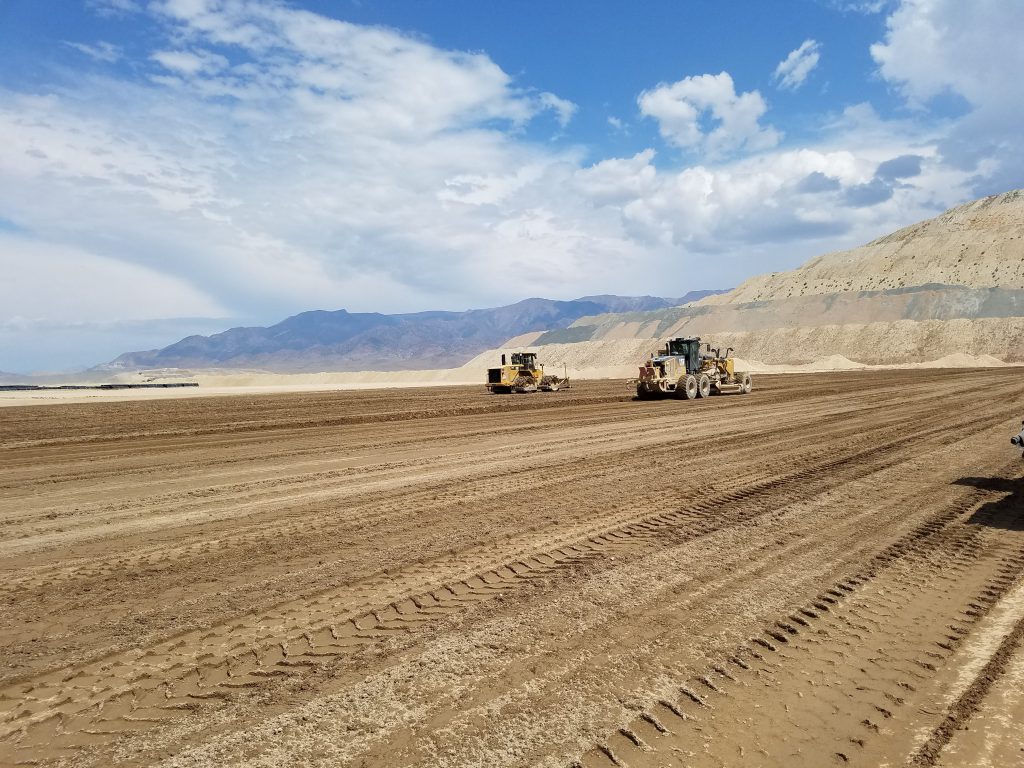
The Fort Knox gold mine 42 km northeast of Fairbanks, Alaska, is one of the few cold-weather heap leach facilities in the world. Mining is done by open pit methods with ore milled and placed on the heap. The mine plan stretches to 2030.
The Fort Knox mineral resource includes 117.4 million measured and indicated tonnes grading 0.33 gram gold per tonne for 1.3 million contained ounces. There are also 101.6 million inferred tonnes grading 0.32 gram gold per tonne for 1 million contained ounces.
In 2020, Kinross acquired 70% of the Manh Choh (formerly Peak) project, 400 km southeast of the Fort Knox mine. Production is planned to begin in 2024 with the ore being processed at the Fort Knox mill, which has a capacity of 45,000 tonnes per day.
Exploration 13 km east of the Fort Knox mine has focused on the satellite Gil-Sourdough deposit. Production was anticipated to begin late last year.
The Round Mountain open pit mine, 90 km north of Tonopah, Nevada, is 100% owned. In 2016, Kinross bought out its joint-venture partner Barrick Gold. The mine began operating in 2003 and poured its 15 millionth ounce in 2018. Gold is recovered by milling, gravity and heap leaching.
Kinross expanded the Round Mountain mine with the phase W project, which poured its first gold in 2019. This project included a layback of the current pit, which will increase life-of-mine production by 1.5 million oz. of gold. Work is already underway on the phase S expansion.
At the end of 2020, Round Mountain’s measured and indicated resources stood at 173.4 million tonnes grading 0.7 gram gold per tonne for 3.7 million contained ounces. A further 96.4 million tonnes grading 0.5 gram gold per tonne and containing 1.6 million ounces were counted in the inferred resource.
The Bald Mountain mine is another open pit mine, 110 km southeast of Elko, Nevada, in the southern extension of the Carlin trend. Kinross acquired 50% of the mine in 2016 and bought out its joint venture partner in 2018. Gold is recovered primarily by heap leaching.
At the end of 2020, Bald Mountain’s measured and indicated resources were 205.5 million tonnes grading 0.5 gram gold per tonne for 3.6 million contained ounces. The inferred resource was 695,000 contained oz. of gold in 47.7 million tonnes grading 0.5 gram gold per tonne.
Kinross plans to aggressively expand all of its mines around the globe, but the biggest news recently is the gold major’s takeover of junior explorer Great Bear Resources and its flagship high-grade Dixie gold project in the Red Lake camp of Ontario.
The market capitalization of Kinross Gold is $6.8 billion.
Lion Copper and Gold
Formerly known as Quaterra Resources, Lion Copper and Gold (TSXV: LEO; US-OTC: LCGMF) is advancing its flagship MacArthur copper project 80 km southeast of Reno, Nevada. The oxide resources were mined in the 1990s, and Lion has plans to bring it back into production.

The oxide and chalcocite material at MacArthur may contain a total of nearly 1.7 million lb. of copper. A closer look with a 0.12% copper cut-off grade, puts the measured and indicated resources at 159.1 million tonnes averaging 0.21% copper for 675.5 million contained pounds, and inferred resource at 243.4 million tonnes grading 0.2% copper for 979.5 million contained pounds.
There is also a sulphide resource at MacArthur that is open in most directions and the subject of ongoing exploration. This primary material, estimated with a 0.15% copper cut-off, has measured and indicated resources of 1.1 million tonnes grading 0.29% copper for 6.4 million contained pounds, plus an inferred resource of 134.9 million tonnes at 0.28% copper for 764.1 million contained pounds. The resource estimate comes from a prefeasibility study released in 2012.
Lion plans to release an updated resource estimate before the end of the first quarter of this year.
The company recently drilled 16 holes that bottomed in sulphide mineralization and averaged more than 0.25% copper. The northernmost hole intersected 19.5 metres grading 1.31% copper, including 6.5 metres of 2.21% copper.
Adjacent to the MacArthur project are the historic Bear and Yerington copper properties. The Bear deposit was partially drilled in the 1960s and has a non-compliant historic resource of roughly 450 million tonnes averaging 0.4% copper.
The open pit Yerington copper mine operated from 1918 to 1978. The 2013 historical resource estimate included 633 million lb. of copper at 0.3% to 0.33% copper in the measured and indicated category and 600 million lb. of copper at 0.23% copper in the inferred resource.
Lion also owns the Butte Valley prospect 61 km northwest of Ely, Nevada. In partnership with Kijik Corp., an Indigenous-owned firm, Lion has an interest in the Groundhog copper prospect in southwest Alaska. This month, Lion acquired the Blue copper prospect 40 km northwest of Helena, Montana, where the claim block hosts at least 14 historic small mines that produced gold, copper and tungsten.
Lion’s project pipeline includes two Canadian properties — Chaco Bear and Ashton — in British Columbia. Both have evidence of porphyry copper-gold, high sulphidation epi-mesothermal copper-gold, and porphyry related low-sulphidation epi-mesothermal gold mineralization. These two properties are optioned to Houston Minerals and Spences Bridge Group, respectively.
Lion Copper and Gold has a market capitalization of $20.8 million.
Ucore Rare Metals (TSXV: UCU; US-OTC: UURAF) is focused on rare earths and critical metals. It owns all of the Bokan-Dotson Ridge heavy rare earth elements (REE) property on Prince of Wales Island in southeast Alaska.
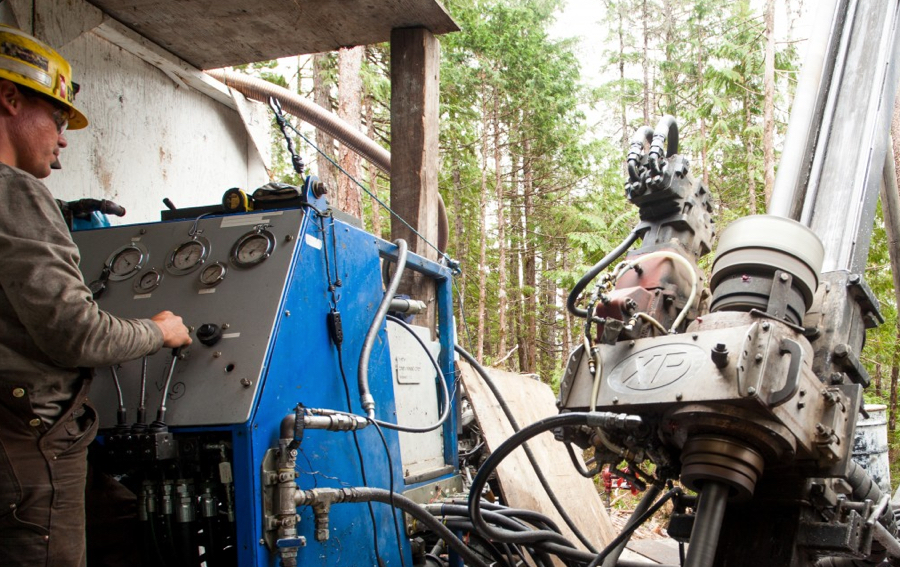
Ucore’s ultimate goal is to foster an independent American REE supply chain. Ucore has spelled out its ambitions in its three-year Alaska 2023 plan, which includes the creation of the Alaska SMC (strategic metals complex) and funding for Bokan. The Alaska 2023 plan also includes securing REE feedstock from a U.S.-friendly source and cultivating a tiered supplier and customer base for REE products in the West.
Part of the plan, involving Ucore subsidiary Innovation Metals, is to commercialize the proprietary Rapid SX process for the low-cost separation and purification of REEs, nickel, cobalt, lithium, and other strategic metals. This process is based on solvent-extraction, a much cleaner technology than conventional smelting. Engineering for a commercial demonstration plant is complete, and procurement of the components has begun.
The company continues to advance the Bokan REE project well beyond the preliminary economic assessment that was produced in 2013. A decade ago, the inferred resource was 5.2 million tonnes grading 3,369 parts per million (ppm) light REE and 2,114 ppm heavy REE or 0.394% light rare earth oxides (REO) and 0.259% heavy REO. The total REO grade was 0.653%.
Meanwhile, Ucore has been drilling Bokan so that it can upgrade the earlier resource estimate and assays are pending. The deposit remains open down-dip and on-strike. A summer program is to begin in May 2022.
The mineral processing flowsheet has been designed, and a pilot plant has been created to test mineralized samples from Bokan this summer. An optimized concentrate will be produced. The results of those tests will form part of the feasibility study. The company has hired a permitting consultant to move forward on that front.
Ucore has already invested over $27.4 million to establish and validate the Bokan-Dotson Ridge resource in preparation for mine design and permitting.
Ucore has a market cap of $37.6 million.
Wolfden Resources
Wolfden Resources (TSXV: WLF; US-OTC: WLFFF) is the 100%-owner of the Pickett Mountain zinc-lead-copper-silver project in northern Main’s Penobscot County. The company believes it is one of the highest grade undeveloped massive sulphide deposits in North America. The project lies within the Gander Terrane, which hosts the 46 known deposits of the Bathurst mining camp in New Brunswick and the Buchans mining district in Newfoundland.
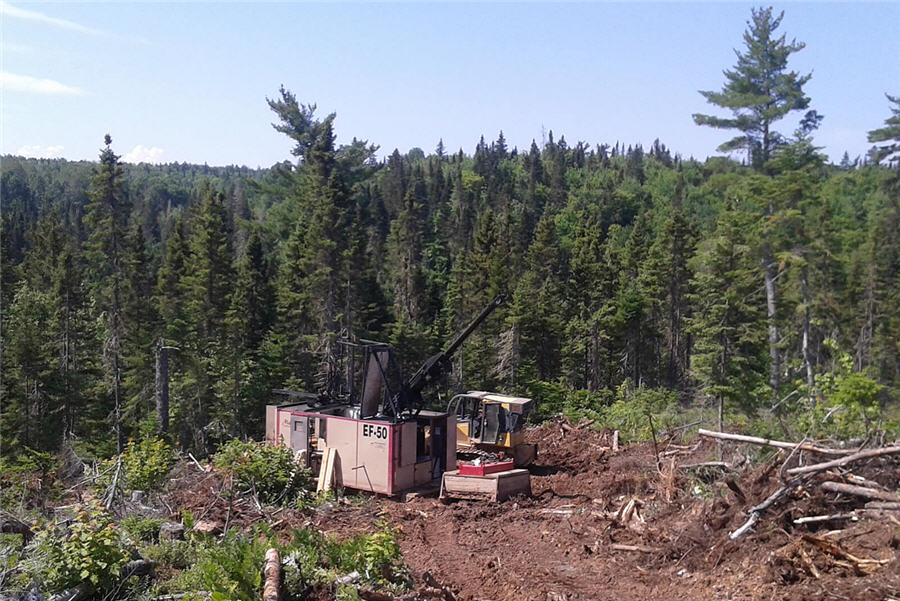
The average grades at Pickett Mountain are 10% zinc, 4% lead, 1.5% copper, 100 grams gold+silver per tonne. Resources were updated last in November 2021. There is an indicated resource of 2.7 million tonnes grading 8.91% zinc, 3.83% lead, 1.22% copper, 0.8 gram gold per tonne, and 97.2 grams silver per tonne (17.72% zinc-equivalent). Grades in the inferred resource are equally high. There are 3.6 million inferred tonnes grading 9.27% zinc, 3.82% lead, 1.0% copper, 0.7 gram gold per tonne, and 105.4 grams silver per tonne (17.65% zinc-equivalent). Estimates were made using a 7% zinc-equivalent cut-off grade.
A preliminary economic assessment was completed in September 2020. The early stage study proposed an underground ten-year mining project with a 1,200 tonne-per day mill.
Wolfden forecasts a pre-production capital expense of $147.4 million, plus $100 million for sustaining capital and $13.7 million for reclamation and closure. The project has a payback period of 2.4 years after taxes. For the PEA, metal prices of $1.15 per lb. zinc, $3 per lb. copper, $1 per lb. lead, $1,500 per oz. gold, and $18 per oz. silver were used.
Pickett Mountain was estimated to have an after-tax net present value at a 5% discount rate of $255.5 million. With an 8% discount rate the NPV would be $198.3 million. The internal rate of return after taxes would be 37%.
Maine has a restrictive mining law passed in 2017, which forbids open pit mines of more than 1.2 hectares. Wolfden is the first mining company to apply for re-zoning of its landholding under this law. The original application was made a year ago to rezone 261.5 hectares of its 2,891 hectare Pickett Mountain holdings. The area covered would be the site of a small underground base metal mine.
In October, Wolfden withdrew its application so that it can amend the request.
“Although this is a temporary setback and will draw some negative criticism on the future of mining in Maine, the company is confident it has an approach and path forward for submitting a new application,” Ron Little, Wolfden’s president and CEO, stated in a press release. “The project represents one of the greenest mine designs in the world, will generate 303 jobs per year, generate over $697 million in economic output to the state, and continues to receive tremendous support from local and regional communities.”
In Canada, Wolfden is advancing its 100%-owned Rice Island nickel-copper-cobalt project located in the Snow Lake-Flin Flon greenstone belt in Manitoba. The company has a second nickel-copper property, Nickel Island, 280 km southeast of Thompson, Manitoba. Neither of these properties have published resources.
The company also holds the 16,000-hectare Tetagouche property, with six historic massive sulphide deposits (non 43-101 compliant), in the Bathurst zinc-lead mining camp in New Brunswick. It also owns the California Lake silver deposit, the most significant deposit of its type in the district.
Wolfden has a market capitalization of $26.3 million.
(This article first appeared in The Northern Miner)




